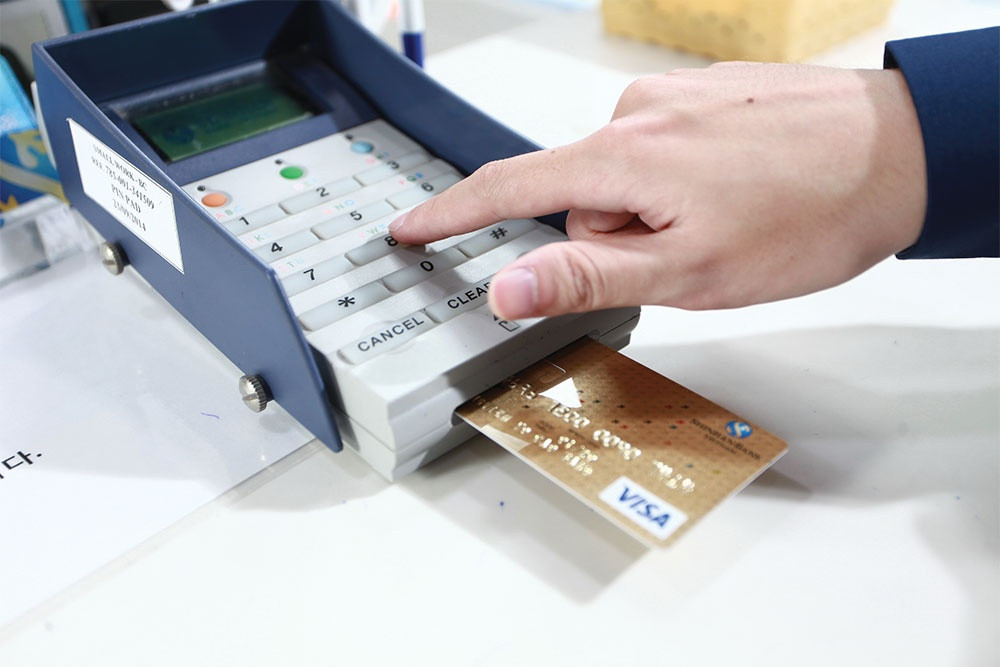 |
The proliferation of Vietnamese credit cards and their potential to reshape consumer finance were brought into sharp focus at last week’s event on promoting the expansion of e-payments in Vietnam.
Pham Anh Tuan, head of Department of Payments at the State Bank of Vietnam (SBV), shed light on the trajectory of domestic card issuance. “By the end of July, 15 card-issuing organisations had issued domestic credit cards. The circulation of these domestic cards stood at over 811,000, marking a surge of 42 per cent compared to the same period in 2022,” he said.
He further elaborated that over the last four years, domestic credit card issuance witnessed an average annual growth of 29.6 per cent. This outpaces international credit cards, which grew 17.72 per cent per annum.
However, the proportion of domestic cards remains modest, accounting for just 8.7 per cent of all circulating credit cards, Tuan pointed out.
“Beyond the standard features, the intrinsic benefits of domestic credit cards might prove attractive to the average consumer or those newly acquainted with banking services,” he continued. “Straightforward card opening procedures, lower issuance and transaction costs, and fostering easier access to banking services facilitate the drive towards cashless transactions and comprehensive financial inclusion.”
Le Phuong Hai, deputy CEO of VietCredit, provided an institutional perspective, noting the significant potential credit cards bring to the consumer credit landscape. “Credit card penetration in consumer lending across banks and financial companies has been on the rise in recent years, but it remains below 10 per cent,” Hai said.
He emphasised that Napas Credit occupies a mere 5.5 per cent share of the total credit card debt. Surprisingly, VietCredit, with its predominant focus on domestic credit cards, currently commands over half of the market share, serving more than a million customers.
Le Hong Phuc, deputy CEO of Agribank, also asserted the supremacy of domestic credit cards over international variants in the local market due to the former’s cost-efficiency. “It aptly serves as a ‘national credit card’, catering to various customer segments including students and temporary workers with fluctuating incomes,” Phuc said.
In an international context, merely over 4 per cent of Vietnam’s population possess credit cards, inclusive of international variants. This is in stark contrast to neighbours like Thailand (10 per cent), Malaysia (21 per cent), China (21 per cent), Singapore (49 per cent), Taiwan (54 per cent), and Japan (68 per cent). These statistics underline the immense potential for domestic credit card expansion in Vietnam, leveraging their distinctive advantages.
Nguyen Dang Hung, deputy general director of Napas, said that cashless payments via QR code and card-based transactions have become increasingly prevalent recently. Moreover, the convenience of buy now, pay later schemes and credit card payments has seen wider acceptance.
“The proliferation of smartphones and internet access has further solidified the foundation for mobile-based payments in Vietnam. With a population of over 100 million, the nation offers an enormous potential market for the growth of domestic credit cards,” Hung said. “Globally, any payment technology or product that exists is now also available in Vietnam. However, the payment infrastructure remains fragmented.”
Meanwhile, experts also believe that domestic credit cards are gaining traction not just as a financial tool, but also as a representation of national pride.
Nguyen Tuan Anh, vice head of the Delegate Task Force of the National Assembly Standing Committee said, “The SBV needs to implement apt strategies that encourage residents to utilise domestic credit cards. Domestic credit cards stand as a national brand. It’s imperative to establish connections ensuring so that consumers can use these cards both domestically and internationally.”
While urban areas have seen a surge in credit card adoption, rural markets remain relatively untapped. “The focus should be on broadening financial literacy and mechanisms that deeply reach our citizens,” said Anh. “Vietnam, with its significant rural population of approximately 63 million, presents a ripe opportunity for evolving payment card products and services.”
Highlighting the high costs associated with issuing domestic credit cards, Anh urged the SBV to innovate. “Users often face high interest rates, but with advanced technology, we can minimise these costs. We can leverage interest rate incentives to promote domestic credit card adoption among the public,” Anh said.
Source: VIR